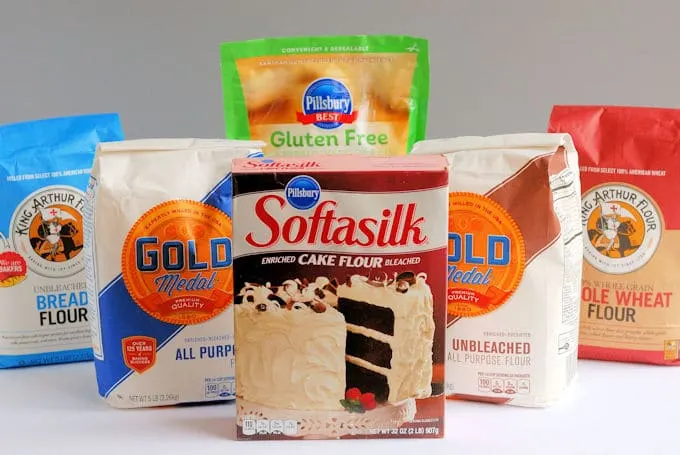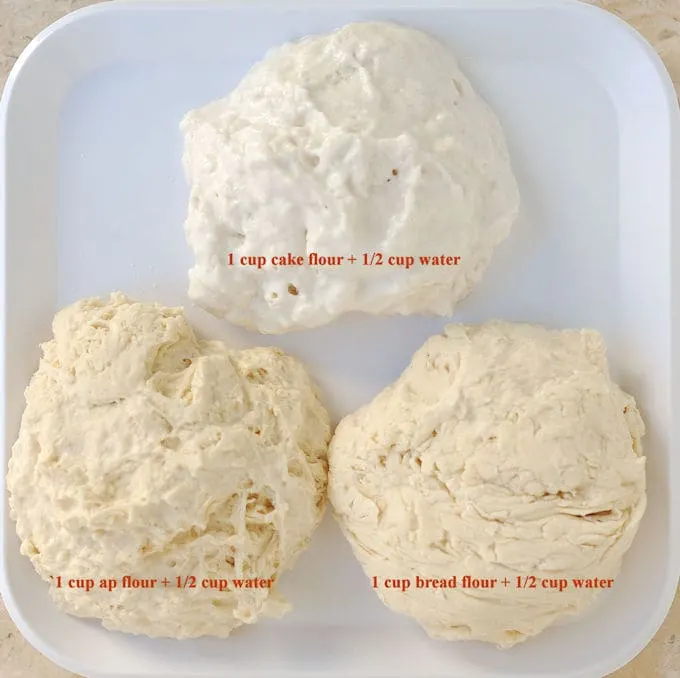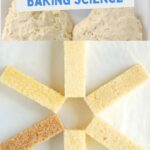🌾 Flour in Baking
If one ingredient defines baking, it’s flour — especially wheat flour. While sugar, eggs, and fat all play vital roles, flour forms the backbone and structure of most baked goods. It gives bread its chew, cakes their crumb, and pastries their strength and flakiness.

Table of contents
The composition of Wheat Flour
Wheat flour is composed primarily of proteins and starch, along with small amounts of lipids, sugars, and enzymes. Together, these components create the crumb — a network of starch and protein that traps millions of tiny air bubbles.
- Starch (≈70%) absorbs water, swells, and gels during baking, helping form structure.
- Protein (mainly glutenin and gliadin) combines with water to form gluten, the elastic framework that gives dough its strength.
The stronger the gluten, the more water it will absorb. Replacing low-protein flour with a high-protein flour will make the batter thicker and the final product chewier or denser.

Baking Sense Tip
If your cake batter feels unusually thick or your bread dough too stiff, check whether you used a higher-protein flour than the recipe specified.
Why We Knead Dough:
Mixing or kneading aligns and strengthens gluten strands. That’s why bread dough starts loose and shaggy but becomes smooth and elastic with kneading.
However, over-mixing cake or pancake batter develops too much gluten, leading to a tough, dense texture.
Types of Wheat Flour
Flour types are determined by wheat variety and protein content:
- Hard wheat (spring wheat): High in protein, low in starch — produces strong gluten, ideal for breads.
- Soft wheat (winter wheat): Lower protein, finer particles — produces tender, delicate baked goods.
- All-purpose flour: A balanced blend of hard and soft wheats.
- Whole wheat flour: Includes bran and germ; higher fiber, slightly nutty flavor.
Bread flour is milled mostly from hard wheat, while cake flour comes from soft wheat.
Protein Content by Flour Type
| Flour Type | Protein % | Weight per Cup |
|---|
| Cake Flour | 7–8% | 4.5 oz |
| Bleached All-Purpose | 9.5–12% | 5 oz |
| Unbleached All-Purpose | 11–12% | 5 oz |
| Bread Flour | 12–13% | 5 oz |
| Whole Wheat Flour | 11–15% | 5 oz |
When to Use Each Flour
- Bread Flour – for chewy, structured bakes like White Sandwich Bread or Bagels.
- Cake Flour – for tender, delicate textures like Vanilla Butter Cake or Pound Cake.
- All-Purpose Flour – for balanced structure and softness, ideal for Cookies and Scones.
What is Gluten-Free Flour?
Gluten-free recipes rely on non-wheat flours that lack gluten-forming proteins. To replace gluten’s elasticity, bakers use binding agents like xanthan gum or guar gum.
Commercial gluten-free blends typically include a mix of rice flour, potato starch, pea fiber, and tapioca starch.
While these mixtures work well, remember: without gluten, the structure is weaker, so gluten-free baked goods won’t rise quite as high or hold shape as well as wheat-based versions.
📘 Continue Learning
This page is part of my Baking Ingredient Science series, where I explain how each ingredient affects texture, flavor, and structure in baking.
Explore more ingredient guides:
- Sugar in Baking – sweetness, tenderness, and moisture
- Fats in Baking – richness and flakiness
- Eggs in Baking – structure and emulsification
- Salt in Baking – balance and control
- Chemical Leavening in Baking – rise and aerate
- Yeast in Baking – fermentation and flavor
- Chocolate in Baking – flavor and structure

